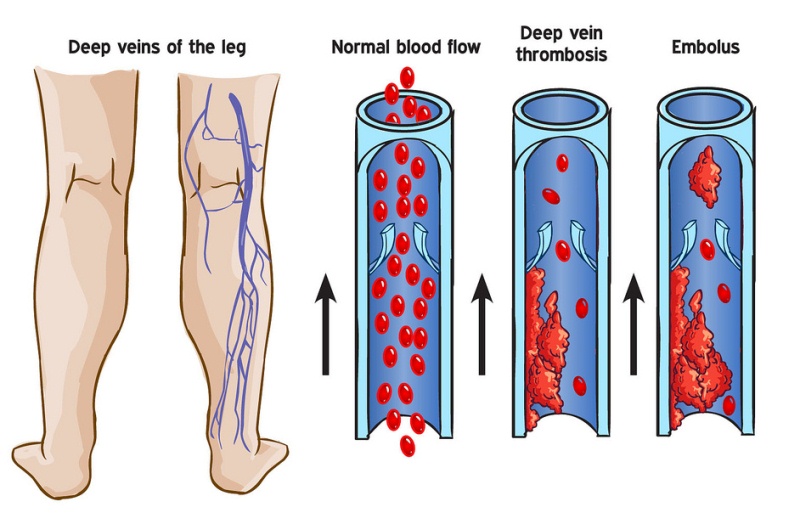Deep Vein Thrombosis: Everything You Need to Know
This is a silent killer that can hide in a person’s body for years and become lethal in a matter of weeks. It is not very advertised in the media, since all the subjects are covered by heart conditions, cancer and other illnesses, which is why it is important to find out more about this silent killer.

Contents
What is the deep vein thrombosis?
This condition is manifested by a blood clot in a vein, usually at the level of the leg. The real danger appears when the clot gets to travel around the body, up to the lungs, causing pulmonary embolism, a lethal turn of events.
The symptoms are usually accompanied by swelling and pain, but they might as well be silent.
Risk factors
Almost 2 million people develop this condition every year and many of them are aware of it only by the time when it becomes a threat to their lives. Who should pay more attention?
- Women taking birth control pills
- Pregnant women and those that have just given birth (6-8 weeks after the birth)
- People who do not move for longer periods of time
- People who have a case of pulmonary embolism in the history of the family
- The elderly
- Those who suffer from obesity
- People who are prone to clogging disorders
- Smokers
Symptoms
If you are experiencing some of the following symptoms, consult a doctor immediately.
- Swollen legs – Usually only one leg is swollen, but there are also cases when both of them are. If your legs are swollen and you cannot find an explanation for this, go to your doctor immediately.
- Cramps – If you are experiencing cramps in your leg, but they cannot be justified by an intense physical activity or by a nutritional deficiency, a medical professional should examine your leg.
- Chest pain and breathing difficulties – This could be an indicator of the blood clot travelling through your body. By the time your chest hurts, it might mean that it has reached your lungs. Seek emergency help right away.
- Coughing blood – This could be an indicator of DVT, but it can also show other health problems. A doctor should be consulted right away.
Prevention methods
- Exercise – The low blood flow is the major factor contributing to the appearance of DVT. So, make sure that you exercise and stay active all the time.
- Take a stretching break or walk – If you work in an office, it’s a good idea to take a break every hour to stretch and even walk a bit. Shake your limbs to get the blood flowing.
- Massage for those unable to move – People who are confined to a bed and are unable to move should massage their limbs now and then, to get the flow of the blood rising.
- Losing weight – The obese people have a higher chance of developing DVT. Make sure you lose the extra weight to ensure a better circulation of the blood.
- Quit Smoking – Smokers are also at a very high risk of developing DVT, so quitting this vicious habit is mandatory.



